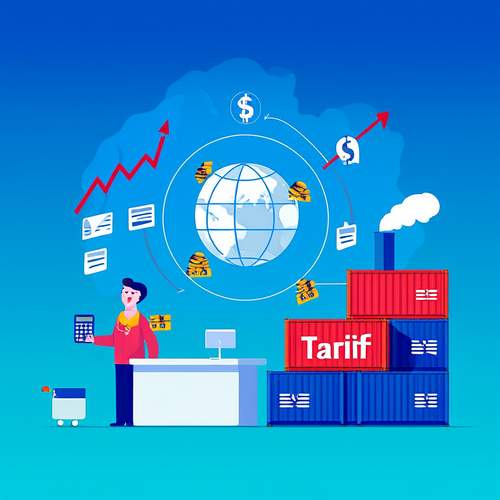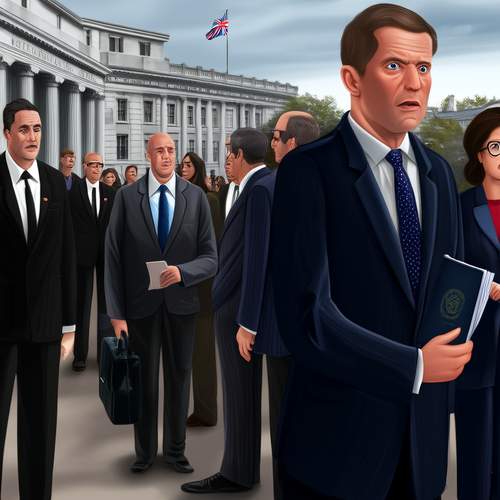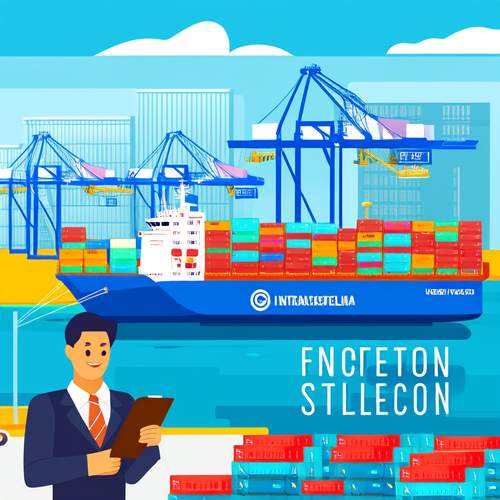In the ever-shifting landscape of global trade, President Donald Trump’s approach to tariffs has been nothing short of a rollercoaster ride. Hours before his “reciprocal” tariffs were set to take effect last month, Trump claimed that countries were desperate to make deals, with some even “kissing my a**.” However, the reality was far from the optimistic picture he painted. Instead of a flood of deals, financial markets plummeted, and impacted nations prepared retaliation plans, exacerbating the losses experienced after the initial tariff announcement on April 2.
The Initial Tariff Announcement and Market Reactions
Trump’s announcement of “reciprocal” tariffs was met with significant backlash. Just over 12 hours after the tariffs took effect at 12:01 a.m. ET on April 9, the president announced a 90-day pause, ostensibly to buy more time to work on “bespoke” trade deals with impacted countries. This pause was intended to provide a window for negotiations, but it also highlighted the complexity and unpredictability of the administration’s trade strategy.
The Quest for Bespoke Trade Deals
In the weeks following the pause, Trump and administration officials continually hinted at a slew of imminent trade deals. However, as the self-imposed July 9 deadline for the resumption of tariffs approached, only one deal with the United Kingdom had been announced. This slow progress raised questions about the feasibility of securing individualized trade deals within the given timeframe.
The Shift to Regional Tariffs
Treasury Secretary Scott Bessent hinted at a potential shift towards regional tariffs in a recent interview. He suggested that the administration might adopt a system where tariff rates are applied regionally, such as “This is the rate for Central America, this is the rate for this part of Africa.” This approach could simplify the complex tariff classification system currently in place, which includes over 17,000 unique tariff product codes.
The Practicality and Risks of Regional Tariffs
Keith Rockwell, a former director at the World Trade Organization and now a senior research fellow at the Hinrich Foundation, highlighted the practicality of regional tariffs. The current system, with its granular classification of tariff rates, would become exponentially more complex if every country had its own unique tariff rate. This complexity is why the WTO has “Most-Favored Nation” tariff rates for its 166 member countries, providing a ceiling for mutually agreed-upon import taxes.
However, grouping countries together under regional tariffs poses its own set of risks. It could provide countries with more leverage to retaliate against the United States collectively, rather than individually. This collective retaliation could have significant economic repercussions, further complicating the trade landscape.
The Administration’s Perspective
Kush Desai, a White House spokesperson, emphasized that the administration’s trade team is working tirelessly to negotiate with other countries. He noted that President Trump has been clear about the need for custom-tailored trade deals to reduce unfair trade barriers that have disadvantaged American industries and workers.
The Implications for Global Trade
The administration’s approach to tariffs and trade deals has significant implications for the global economy. The delay in tariffs and the potential shift to regional tariffs reflect a complex interplay of political, economic, and practical considerations. While the administration aims to secure favorable trade deals, the reality of global trade negotiations is far from straightforward.
Navigating the Trade Landscape
As the deadline for the resumption of tariffs approaches, the administration faces the challenge of balancing its desire for bespoke trade deals with the practical realities of global trade negotiations. The potential shift to regional tariffs offers a way to simplify the complex tariff system but also carries the risk of collective retaliation from trading partners.
In this dynamic and unpredictable trade environment, the importance of strategic planning and flexible negotiation tactics cannot be overstated. The administration’s ability to navigate these complexities will be crucial in determining the future of US trade relations and the stability of the global economy. As countries around the world prepare for the next phase of trade negotiations, the coming weeks will be critical in shaping the future of international trade.

By Grace Cox/May 26, 2025

By Emma Thompson/May 26, 2025

By Christopher Harris/May 26, 2025

By Laura Wilson/May 26, 2025

By Thomas Roberts/May 26, 2025

By Laura Wilson/May 26, 2025

By Amanda Phillips/May 26, 2025

By Noah Bell/May 26, 2025

By Laura Wilson/May 26, 2025

By John Smith/May 26, 2025

By Sarah Davis/May 26, 2025

By James Moore/May 26, 2025

By Amanda Phillips/May 26, 2025

By Michael Brown/May 26, 2025

By Daniel Scott/May 26, 2025

By Thomas Roberts/May 26, 2025

By Victoria Gonzalez/May 26, 2025

By Grace Cox/May 26, 2025

By Rebecca Stewart/May 26, 2025

By Laura Wilson/May 26, 2025